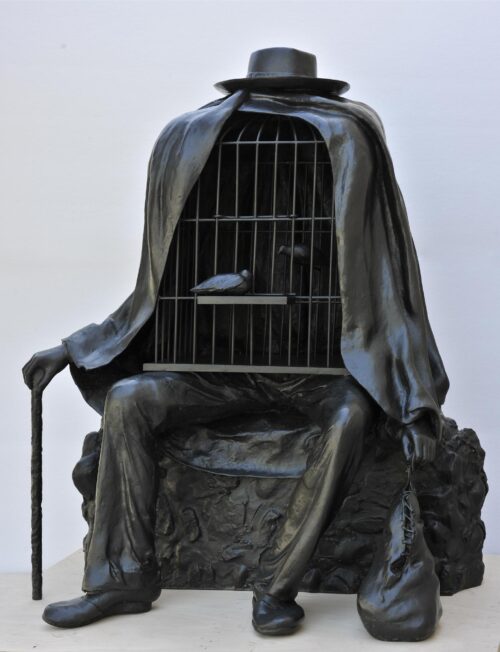
Magritte Rene (1898 - 1967)
The Healer (Le Therapeute), 1967
After his mother’s suicide in 1912, Rene Magritte moved with his family to Charleroi, where he took drawing and painting lessons. In October 1916, he enrolled in the Brussels Academy of Fine Arts, where he studied with Emile Vandamme-Sylva, Gisbert Combaz and Constantine Montald; he also took up literature courses with Georges Eekhoud. In 1919, he came into contact with the members of the Belgian avant-garde and developed relations with young writers of Dada and Surrealist affinities, such as the poet and art dealer E.L.T. Mesens, with whom he began his publishing activity in 1925, with the magazines “Oesophage” and “Marie”. He also published the magazines “Carte d’apres nature” (1952-1957) and “Rhetorique” (1961-1964). The negative reception of his work in his first solo exhibition (1927) was one of the reasons why he moved to Paris, where he lived until 1930. During his three-year stay, he became an active member of the Surrealist movement and associated with Andre Breton and his circle. In 1945, he became connected with the Communist Party but soon disassociated himself. In 1956, he received the Guggenheim Award.
In 1927, his first solo exhibition was held at Le Centaure Gallery, Paris. Solo exhibitions of his work followed in various cities, and retrospective exhibitions were mounted in 1960-1969 in the United States, Germany, Holland and Sweden as well as in Dusseldorf and Brussels in 1996 and 1998. He also participated in a great number of group events as well as in all major Surrealist exhibitions, such as the International Surrealist Exhibition in London (1936).
In 1925, inspired by Giorgio de Chirico’s “Song Of Love”, Rene Magritte turned to Surrealism and became one of its greatest exponents. A short period of work inspired by Cubism and Futurism had come before that, and in the 1940’s he shortly experimented with impressionist painting. His oeuvre is distinguished for its poetic character and an atmosphere of mystery, achieved by using techniques such as distorting scale and blending realistically rendered images with apparently unrelated images, introduced in unlikely contexts. Moreover, a dream-like quality and the reversal of established relations inspire disquiet and incertitude in viewers.

The Healer (Le Therapeute), 1967

We use cookies to make our site work properly, to personalize content and ads, to provide social media features and to analyze our traffic. We also share information about how you use our site with our social media, advertising and analytics partners. Read the Cookies Policy.
These cookies are necessary for the website to function and cannot be switched off in our systems. They are usually only set in response to actions made by you which amount to a request for services, such as setting your privacy preferences, logging in or filling in forms. You can set your browser to block or alert you about these cookies, but some parts of the site will not then work. These cookies do not store any personally identifiable information.
If you disable this cookie, we will not be able to save your preferences. This means that every time you visit this website you will need to enable or disable cookies again.
These cookies tell us about how you use the site and they help us to make it better. For example these cookies count the number of visitors to our website and see how visitors move around when they are using it. This helps us to improve the way our site works, for example, by ensuring that users find what they are looking for easily. Our website uses Google Analytics for statistics reporting.
Please enable Strictly Necessary Cookies first so that we can save your preferences!